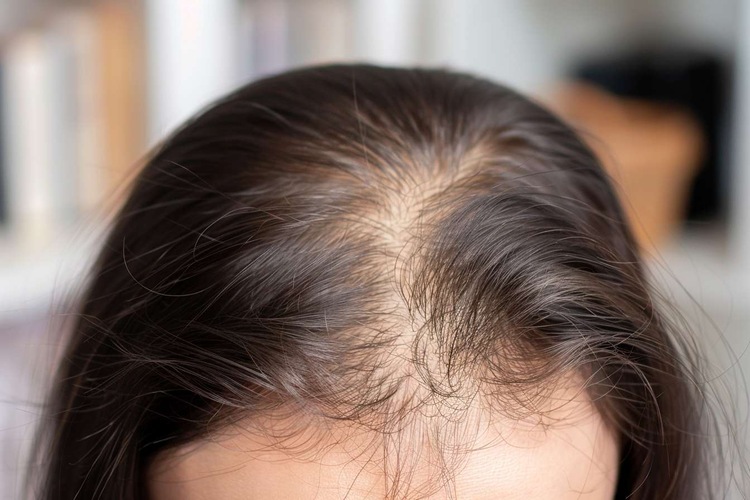Hair Loss Explained: Causes, Treatments & Solutions
Hair thinning and baldness (alopecia) affects millions and can hurt self-image. This guide breaks down why hair falls out, how it alters the scalp, emotional consequences, and the most effective medical and lifestyle approaches — from minoxidil and finasteride to transplants and diet tips — to help you make informed choices about hair restoration and scalp health.

Hair loss is a widespread concern that affects people of all ages and genders. Whether it appears as gradual thinning or distinct bald patches, understanding the underlying causes, how the scalp is affected, and the treatment pathways available can help you make better decisions about managing hair health and confidence.
Common causes of hair loss
Hair loss—often referred to as alopecia—has many triggers. Genetics plays a leading role: androgenetic alopecia is the hereditary form that causes pattern hair loss in both men and women. Hormonal shifts are another major factor. Women frequently notice increased shedding during pregnancy, after childbirth, around menopause, or when experiencing thyroid dysfunction. Medications, such as some chemotherapy drugs, blood thinners, and certain antidepressants, can provoke hair loss as a side effect. Nutritional deficiencies (iron, biotin, vitamin D and others), severe physical or emotional stress, and autoimmune conditions like alopecia areata also contribute.
Female-pattern hair loss tends to present as diffuse thinning across the crown and top of the head rather than a receding hairline, which is more typical in men. Telogen effluvium, a temporary but often dramatic shedding, may follow acute stressors, illness, or rapid weight loss.
How hair loss changes the scalp
When hair becomes thinner, the scalp is exposed to more environmental factors. Sunlight reaches the skin more directly, increasing the chance of sunburn and UV-related damage. Temperature fluctuations and wind can cause dryness or irritation. As follicles shrink (a process called miniaturization), hairs that do grow are finer and less pigmented. Over time some follicles can become dormant, producing little to no new hair and creating visibly bald zones.
Scalp health is intertwined with hair growth: inflammation, poor circulation, or buildup of oils and debris can interfere with the hair growth cycle. Treating the scalp—through cleansing, gentle exfoliation, and managing any dermatitis or fungal conditions—helps create a better environment for stronger hair.
Emotional and psychological impact
Hair often contributes to personal identity and self-image, so losing it can be emotionally painful. Many people report lowered self-esteem, social anxiety, or mood changes when they notice thinning or balding. These reactions are normal and deserve attention: counseling, peer support groups, or speaking with a primary care physician can provide coping strategies and resources.
For some, pursuing treatment brings hope and renewed confidence. For others, acceptance and styling choices (such as shorter cuts, wigs, or head coverings) can restore a sense of control. Mental health support is an important component of any holistic approach to hair loss.
Medical and procedural treatments
Several evidence-based treatments exist, and their effectiveness varies by cause and individual response. Topical minoxidil is widely used and available over the counter; it can slow hair loss and stimulate regrowth in many people by prolonging the active growth phase of hair follicles. Finasteride, an oral medication, reduces levels of dihydrotestosterone (DHT) and is effective for many men with androgenetic alopecia; it is generally not recommended for use by women of childbearing potential.
For those with marked hair loss, surgical hair transplantation transfers follicles from dense-growth areas to thinning zones. Modern techniques like follicular unit extraction (FUE) can produce natural-looking, long-lasting results when performed by experienced surgeons. Low-level laser therapy, platelet-rich plasma (PRP) injections, and other adjunctive treatments may offer benefit in selected cases.
Practical lifestyle strategies
While not all causes are reversible, everyday habits can support hair and scalp health:
- Balanced nutrition: Ensure adequate protein, iron, zinc, biotin, and vitamins A, C, D and E. If you suspect deficiencies, testing and targeted supplementation under medical guidance can help.
- Stress reduction: Chronic stress can push hair into a shedding phase. Practices such as mindfulness, yoga, exercise, and adequate sleep reduce the impact of stress on hair.
- Gentle hair care: Minimize harsh chemical treatments, heat styling, and tight hairstyles that pull on follicles. Use mild shampoos and conditioners, and detangle gently.
- Scalp maintenance: Regular washing to remove buildup, and occasional gentle exfoliation can improve follicle environment. Treat dandruff or dermatitis promptly with appropriate medicated products.
- Overall health: Cardiovascular fitness and healthy circulation support nutrient delivery to the scalp.
Comparing treatment options and approximate costs
| Treatment | Purpose | Typical cost (approx.) |
|---|---|---|
| Minoxidil (topical) | Stimulates follicles; slows loss | $10–$40/month |
| Finasteride (oral) | Lowers DHT in men | $15–$60/month |
| Hair transplant (FUE/FUT) | Moves follicles to bald areas | $3,000–$15,000+ one-time |
| Platelet-rich plasma (PRP) | Stimulates growth via growth factors | $300–$1,200 per session |
| Low-level laser therapy | Encourages follicle activity | $200–$3,000 (device or clinic) |
Costs vary widely by location, provider, and individual treatment plans. Please consult clinics for precise pricing.
How to choose the right approach
Start with a medical evaluation to identify reversible causes (thyroid disease, iron deficiency, medication side effects). A dermatologist or hair specialist can diagnose the type of hair loss and recommend evidence-based options. Consider factors like age, gender, fertility plans (important for finasteride), extent of hair loss, budget, and how much time you can commit to treatment.
Combining therapies—medical treatments plus lifestyle changes and scalp care—often yields the best outcomes. Be patient: most therapies require months to show meaningful improvement because hair grows slowly.
This article is for informational purposes only and should not be considered medical advice. Please consult a qualified healthcare professional for personalized guidance and treatment.





